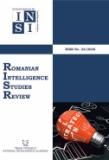AL-QAEDA VS. ISIS: ORIGINILE, MOTIVAȚIILE ȘI FRACTURILE DIN CADRUL JIHADISMULUI GLOBAL
AL-QAEDA VS. ISIS: ORIGINS, MOTIVATIONS AND FRACTURES IN GLOBAL JIHADISM
Author(s): Paul Emanuel ȚapSubject(s): Recent History (1900 till today), Islam studies, International relations/trade, Security and defense, Peace and Conflict Studies
Published by: National Institute for Intelligence Studies
Keywords: ISIS; al-Qaeda; terrorism; jihadism; fracture; tensions;
Summary/Abstract: Terrorism is as old as human history. Over time, terrorism has acquired different forms and has developed a series of strategies to achieve its goals. Islamist terrorism started to develop from the 80s of the twentieth century. Al-Qaeda emerged during the time of the war in Afghanistan (1979-1989) and during the 90s its development took place. In the beginning, ISIS was al-Qaeda's branch in Irak. After the September 2001 attacks, the image of international terrorism started to be associated with the jihadist movements. Nowadays al-Qaeda and ISIS are two of the most iconic jihadist movements. Although they share common values and principles, since 2011 the tensions between them began to intensify, and in 2014 the two organizations broke up. The separation of the two organizations caused a breakdown in the global jihadist movement and, at the same time, an ongoing struggle for supremacy emerged. This article analyzes the causes that led to the separation of the two organizations. The analysis of the causes and motivations that influenced the fracture between al-Qaeda and ISIS was made with process tracing. Process tracing is one of the most used research methodologies in social sciences, and it focuses on analyzing the causes that led to the materialization of an event, and not just to their description. Our findings show that there were multiple causes which led to the fracture between al-Qaeda and ISIS. These include the lack of subordination of ISIS to al-Qaeda, the degree of violence used in the strategies of the two organizations, or the inability to identify which enemy should be eliminated first. Our analysis shows that divergent opinions, different strategies and personal ambitions can distract attention from reaching a common ideal. The split between the two organizations does not increase al-Qaeda and ISIS's chances of achieving their goals.
Journal: Romanian Intelligence Studies Review
- Issue Year: 2020
- Issue No: 24
- Page Range: 21-46
- Page Count: 25
- Language: Romanian

